By Andrew Sims, Volunteer Archivist
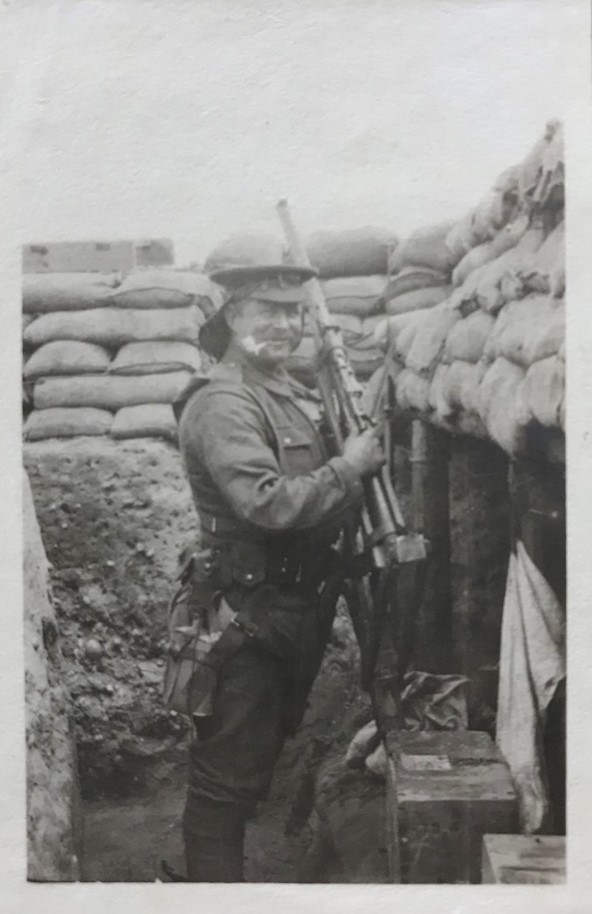
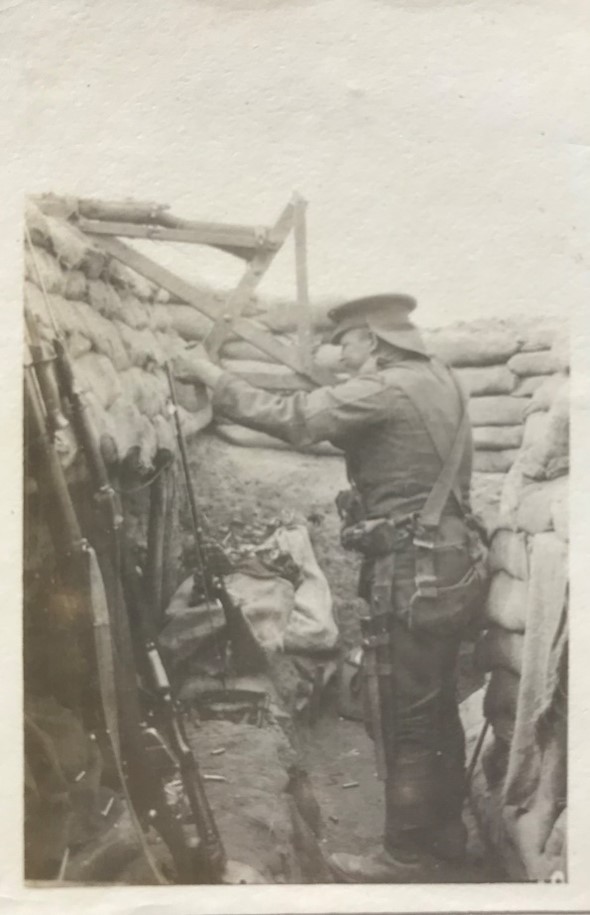
It is not often that there is time to browse through items within the archive but a recent request for information led to a database search which then led to a most exciting find of a photograph album from the First World War. Why is this album so special? If, like me, you are interested in history you will be very familiar with the photographs used in publications that whilst very powerful do not convey the full story.
The album in The Keep archives is superb, adding quality images of life within and behind the lines from an early phase of the war (1914-1915) that I have not come across before. Unfortunately, as with many photograph albums in our collection, detailed information about those featured is sadly lacking. However, the following place names are mentioned, Ypres, The Bluff, Reninghelst (5 miles SW of Ypres), Eecke, Morlancourt (3 miles south of Albert), and Maricourt. Comparing the place names against the War Diary for the 1914-1915 period the possible time frame covered within the album is November 1914 to September 1915.
The album was given to the museum by the son of Lieutenant G. L. Treleaven in March 1984.
The following are just 13 of the 122 images within the album. It would be a useful project to link the images to the War Diary creating a fuller picture of the exploits of the 1st Battalion at that time.
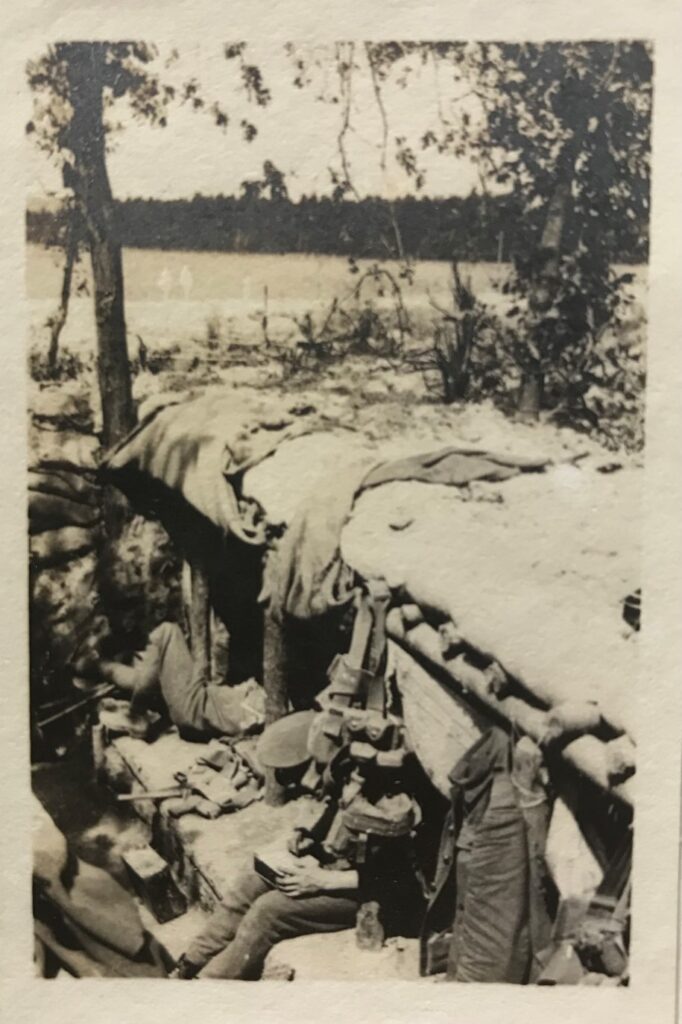
Two soldiers in a shelter, one appears to be resting whilst the other is writing a note, possibly a letter home.
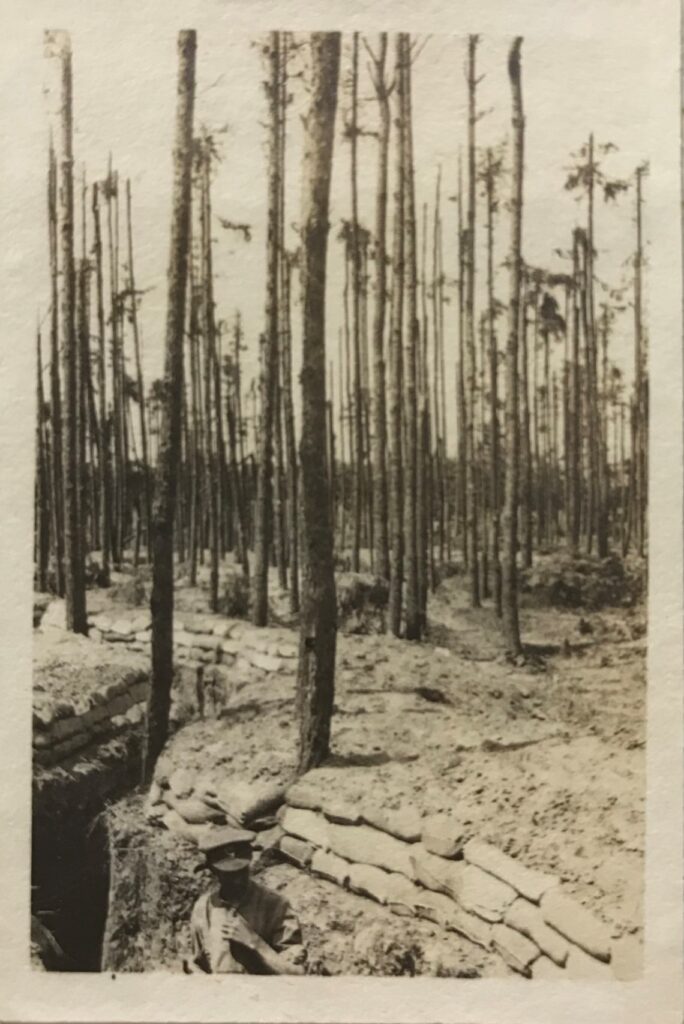
Those who know the horrors of Ypres will be amazed at the number of trees, although they appear to have lost branches and leaves. The trench is basic, perhaps a communication trench rather than a front-line trench. Nevertheless, the trench is quite deep with a good zigzag.
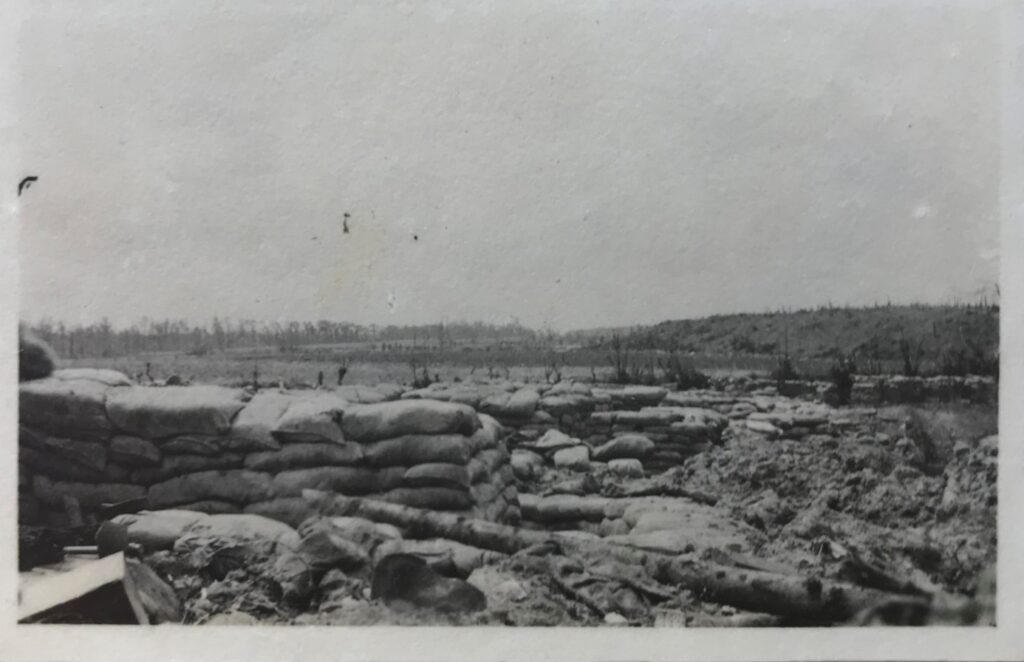
Are we looking across to the German lines, if so, the photographer has taken a risk, either way this image has an ominous feel.
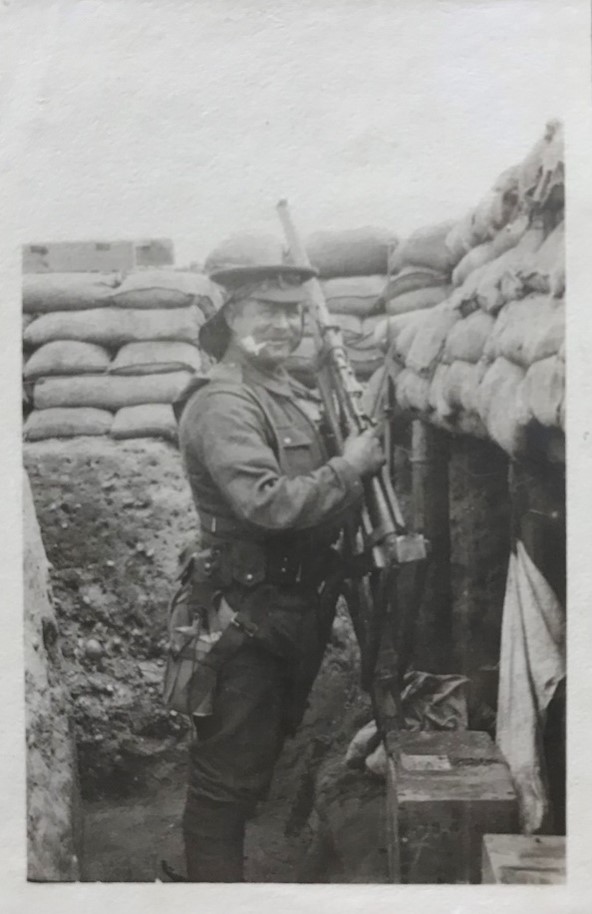
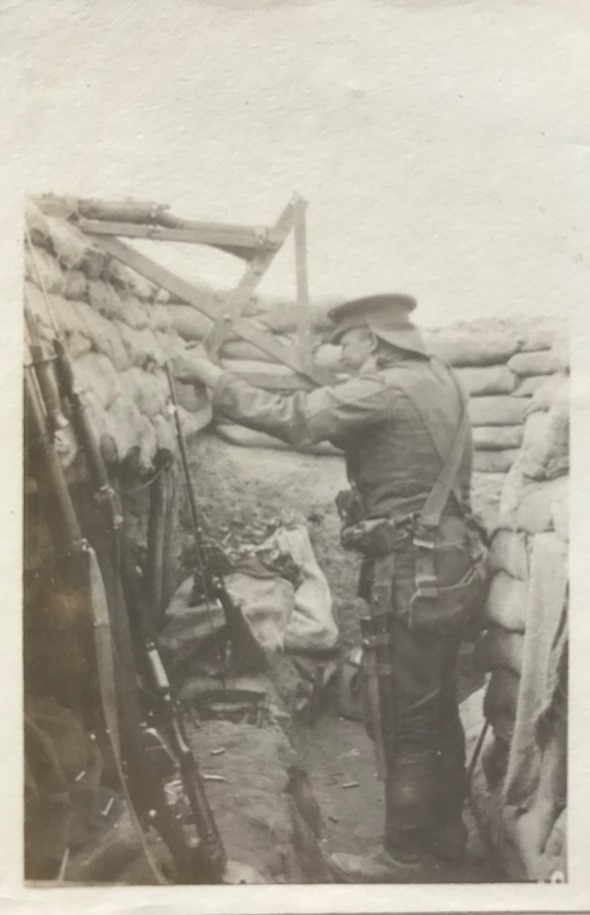
Two images showing a device for firing a rifle above the parapet without exposing yourself to counter fire. The soldier is smiling and obviously enjoys a pipe! Despite his relaxed bearing this trench is probably within the front-line, the trench is above head height, there is a fire step and rifles with fixed bayonets are stacked ready for quick use.
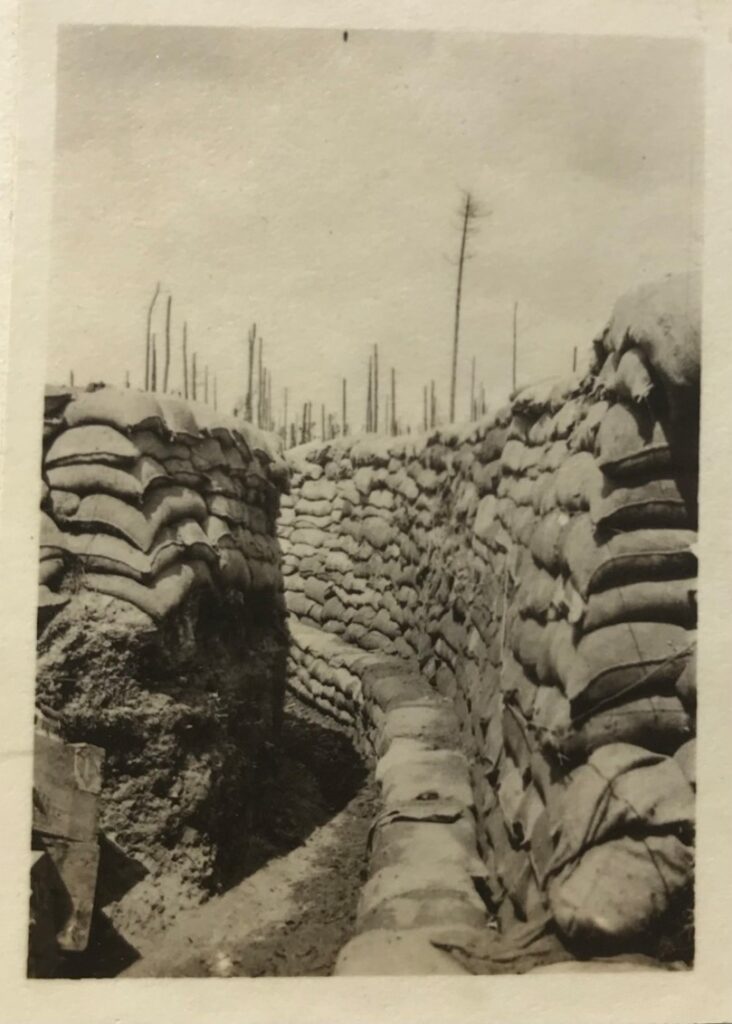
General view of a trench. Again there is a fire step and notice how the trees are now virtually just sticks with leaves and branches shredded from the trunk. In addition, just look at the number of sandbags – so much effort, any damage from enemy fire would have to be repaired.
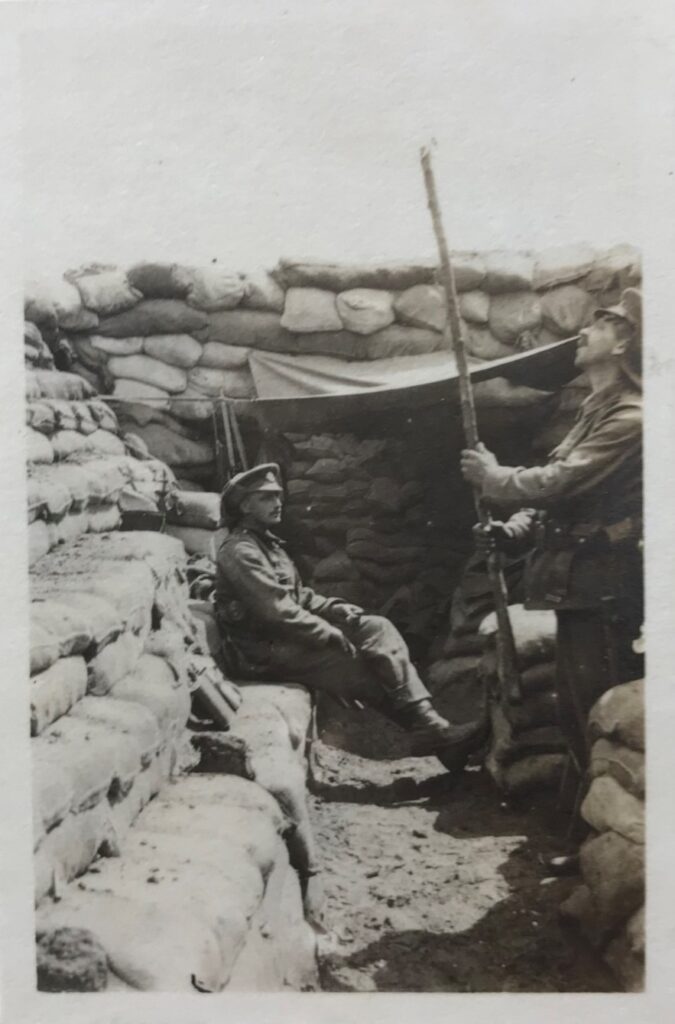
This is unusual, a mirror is attached to a branch so that the soldier can view the enemy trenches without exposing his head to enemy fire. Such mirrors are usually attached to a bayonet attached to the end of a rifle, so perhaps this is mirror attachment Mark I!
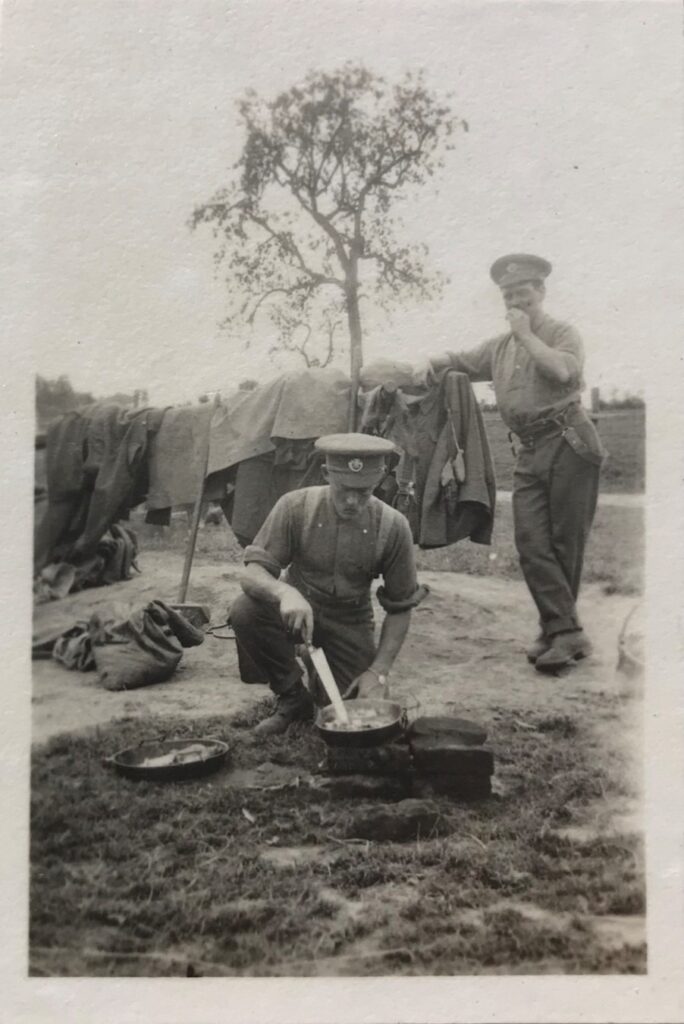
Out of the frying pan – into the fire! Are we witnessing the traditional eggs and bacon fry up?
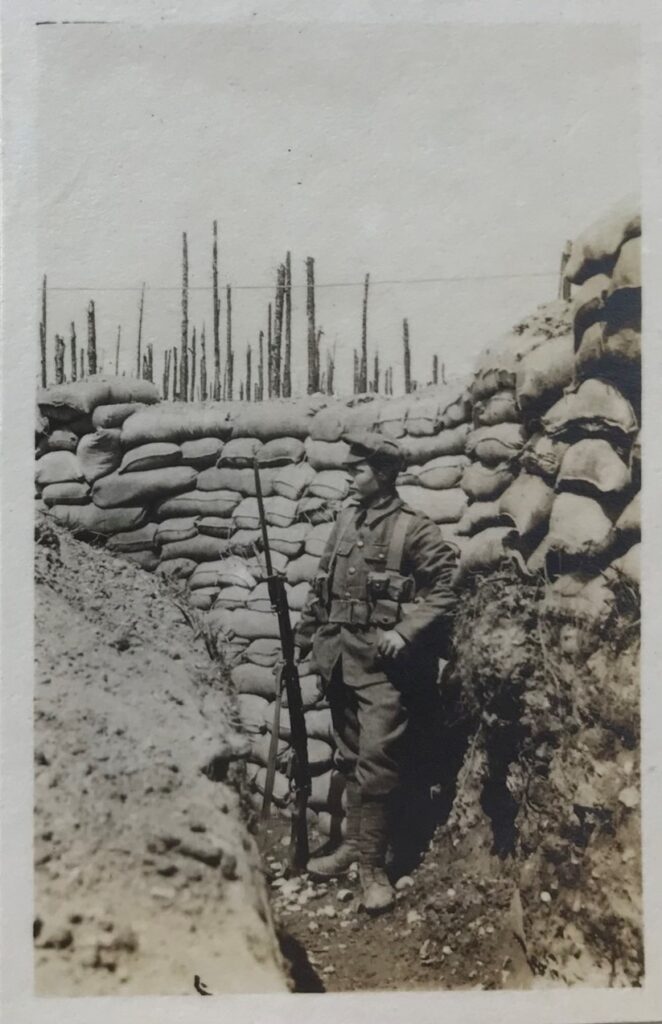
A wonderful study of a soldier on sentry duty. The bayonet is fixed but the pose is relaxed. The damaged trees are clearer in this image and the extreme youth of the soldier is sobering.
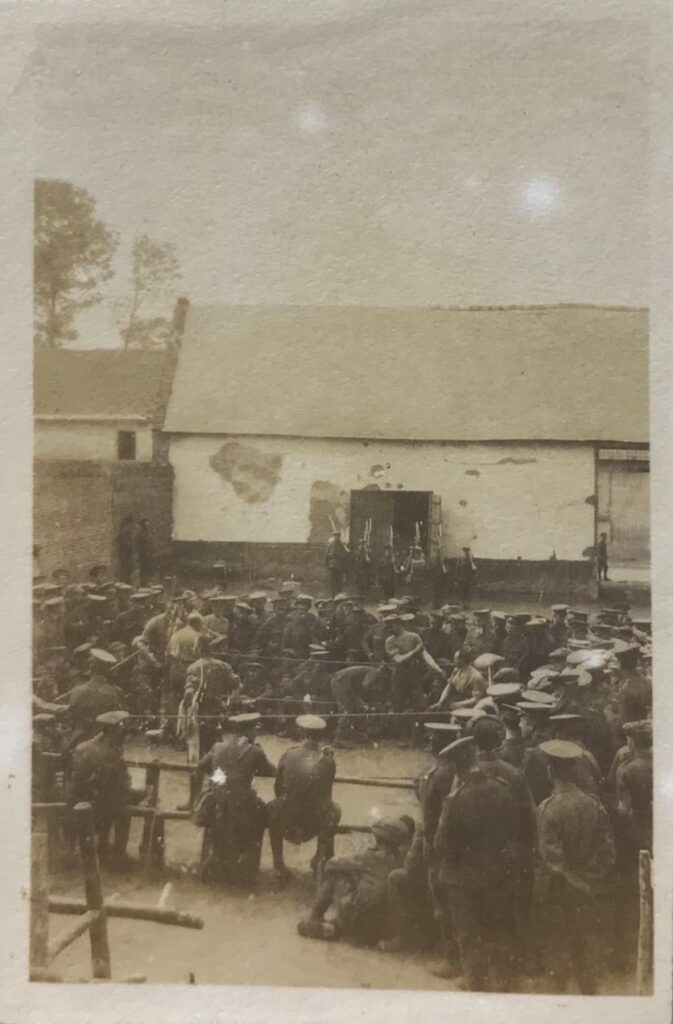
This image is very curious. It appears a boxing match is being arranged in the foreground, that being the case why are there soldiers with fixed bayonets at attention in the farmhouse doorway in the background?
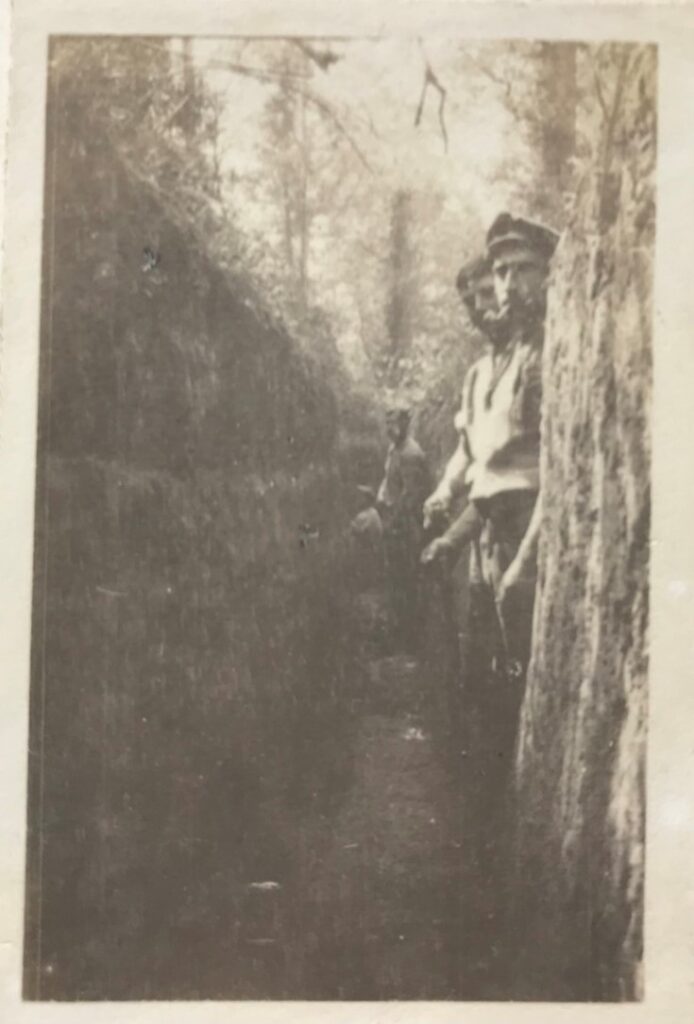
One of a set of images that probably show new trenches being dug. The trenches are quite narrow and there is plenty of tree cover, therefore this is probably a communications trench rather than a front-line trench.
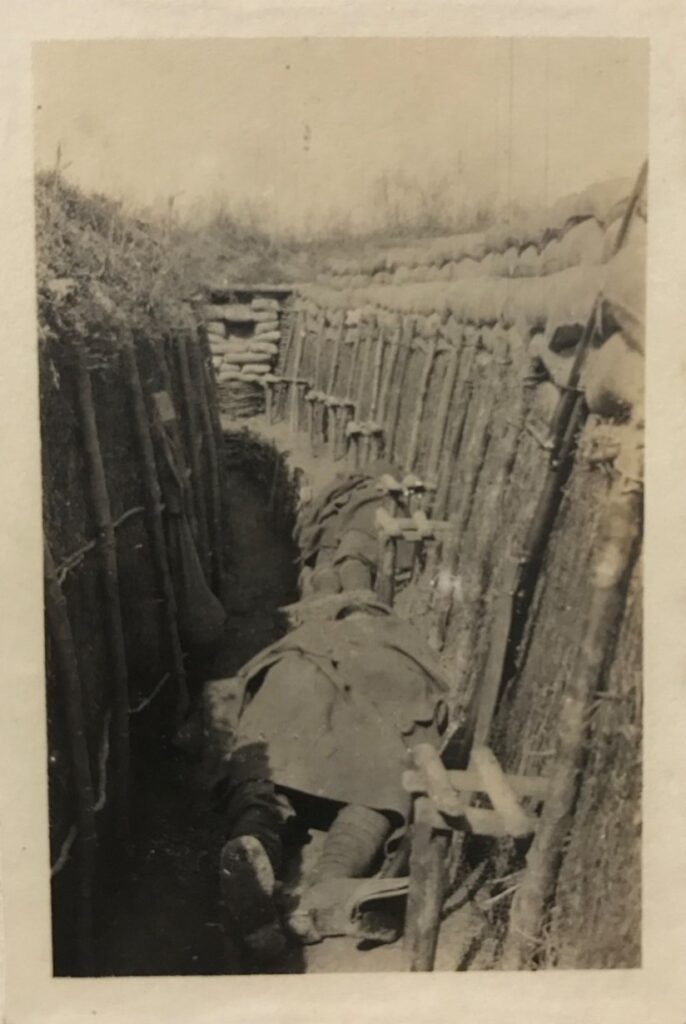
Resting.
